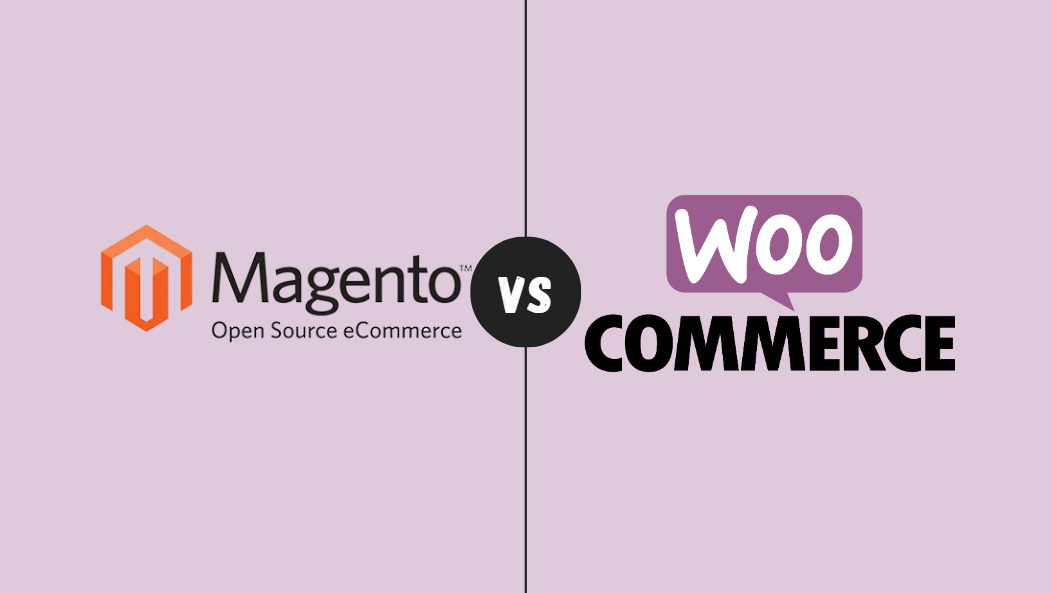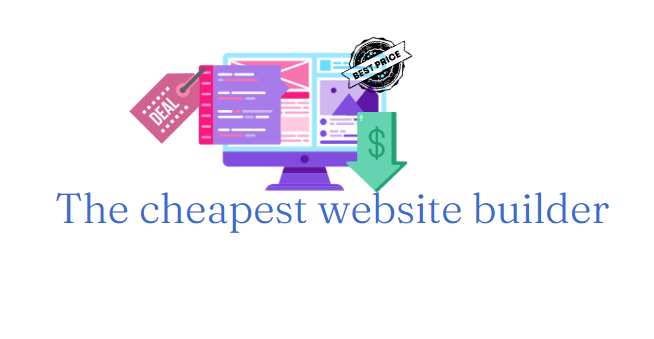- What is an ecommerce platform?
- Prices, reviews and features of Woocommerce and Magento
- Why these platforms are unique
- Performance and customization
- Security and reliability
- Product management and payment options
- SEO and marketing
- Support for the ecommerce store owners
- Ecommerce web hosting
- Success stories of Magento vs Woocommerce businesses
What if Magento vs WooCommerce would be the only platforms to choose from when starting an online store?
Hard decision to make, but better than trying to choose from the overwhelming amount of options out there.
Don’t worry, in this article, we’ll provide an in-depth comparison of Magento and WooCommerce, highlighting their features, pricing, scalability, and more. By the end of this article, you’ll have a better understanding of the differences between Magento and WooCommerce and which one may be the right ecommerce platform for you.
What is an ecommerce platform?
An ecommerce platform is a software application that enables businesses to build and manage their online store. It provides a framework for creating product catalogs, managing inventory, processing payments, handling shipping and logistics, and other essential ecommerce store functions.
Ecommerce platforms come in different forms, such as self-hosted platforms that require installation on a web server, and cloud-based platforms that are hosted and managed by a third-party provider. Some platforms are open source, which means that their source code is freely available for anyone to use, modify and distribute, while others are proprietary and require a license fee to use.
Examples of popular ecommerce platforms include Magento, WooCommerce, Shopify, BigCommerce, and Volusion, among others. Each platform has its own set of features, strengths and weaknesses, which businesses can consider and choose based on their specific needs and preferences.
Comparison of the ecommerce platforms – prices, features, reviews
| Platfrom | Pricing | Rating | Features |
|---|---|---|---|
| Magento | free + premium (custom prices) | 4.2 based on 491 reviews | Advanced product management, order management, shipping options, multi-store functionality, extensive API, and large community support |
| Woocommerce | free | 4.4 based on 243 reviews | Easy setup and customization, flexible product types, shipping options, and payment gateway integrations, large plugin ecosystem, and WordPress integration |
Note that these are just some of the features of both Magento and Woocommerce and may not be comprehensive. You can find more information about the ecommerce platform below. Prices may vary based on custom needs and other integrations used with the plugins.
What makes Magento vs WooCommerce stand out?
Magento

Magento is a highly customizable and flexible ecommerce platform that can handle complex and large-scale online stores. Because of the flexibility, scalability, and rich feature set it can meet the needs of a wide range of businesses. Don’t be confused of the name Adobe Commerce, and the Magento website, since it has been acquired by Adobe a few years ago.
While WooCommerce markets itself as a community ecommerce platform, it is targeted more towards companies. Although, small businesses can still benefit from its functionality. Both Woocommerce and Magento offer a free Community Edition, which is powerful enough on its own, and an Enterprise Edition for larger corporations. In this comparison, we will be examining the Community Edition.
Pros & Cons
- Built for scalability, with the ability to handle even a large online store as long as your host can manage them.
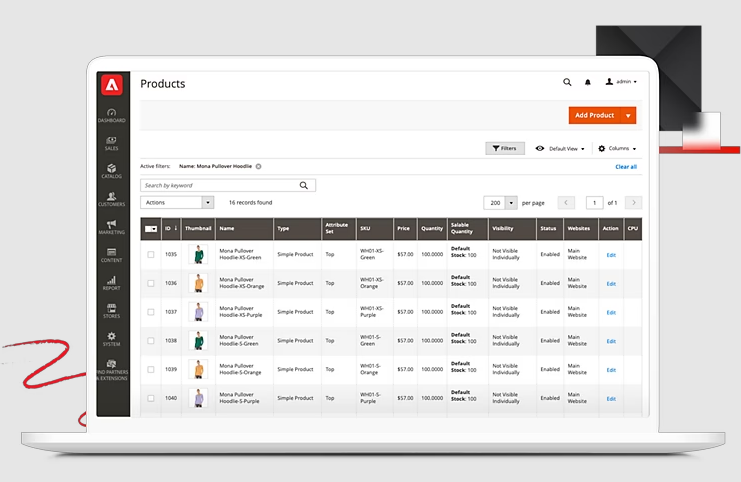
- Shoppers can check out faster thanks to a streamlined process, with guest checkout enabled by default.
- Integrates with PayPal, Authorize.Net, and Braintree right out of the boxalthough,
- It may feel more developer-oriented than user-friendly due to its steep learning curve.
- Magento offers an Enterprise Edition can be expensive, but this is expected for its target market.
Out of the box, looking at both Magento vs Woocommerce However, this one may not seem as beginner-friendly. However, users can utilize the extensive documentation and gain additional advantages if they are willing to put in the time to master the platform. It is perfect for ambitious users looking to quickly scale their shops, provided they have the necessary time to learn the platform.
WooCommerce

WooCommerce is unique in the ecommerce space because of its seamless integration with WordPress, the world’s most popular content management system. Since it is easy to use, and flexible it will surely suit a wide range of businesses and industries.
Most WordPress users are familiar with WooCommerce, a highly popular e-commerce platform that powers almost 400,000 websites. It offers all the essential functionality needed to launch an online store and its extension system provides advanced capabilities. Integrating a WordPress plugin or theme is a piece of cake.
Pros & Cons
- Setting up a store is free, aside from having a web hosting provider
- It’s easy to pick up if you have any experience with WordPress.
- There is extensive documentation available for its users. Plus, you can contact the team behind the project if you have any additional questions.
- Integrates with a wide range of third-party services.
- A large community of developers provides frequent updates and new plugins.
- Offers complete control over your site’s design and functionality.

- although,
- If you don’t use WordPress, you need to learn two new platforms.
- Premium themes and extension costs can add up quickly.
- Customization options may require technical knowledge or hiring a developer.
- Scaling up to handle high-traffic or larger stores may require additional investment in server infrastructure.
Features of Woocommerce:
- Supports an unlimited number of products.
- Comes with a robust extension system, based on the WordPress plugin format.
- Enables you to pick almost any payment processors you want using extensions.
- Offers dozens of premium and free themes.
- Integrates with Google Analytics using an extension.
- Includes SSL support, but you need to obtain your own certificate.
WooCommerce is a good choice for beginners looking to set up an online business, especially those familiar with the WordPress platform, as the platform provides extensive documentation and online tutorials. However, users who do not use WordPress will need to learn two new platforms.
Take a look at the best affiliate themes you can use for WordPress and Woocommerce.
Performance and customization of Magento vs WooCommerce
In terms of performance, both WooCommerce and Magento can handle large stores and high traffic. However, there are some differences in how they achieve this.
Magento is known for its robust architecture and scalability, making it a good choice for larger businesses with more complex needs. However, this also means that it can require more server resources and technical expertise to optimize and maintain the performance of a Magento store. As WordPress plugins in Woocommerce, here are some Magento extensions to take a look at: OneStepCheckout, MageWorx SEO Suite, Amasty Advanced Reports, and more.
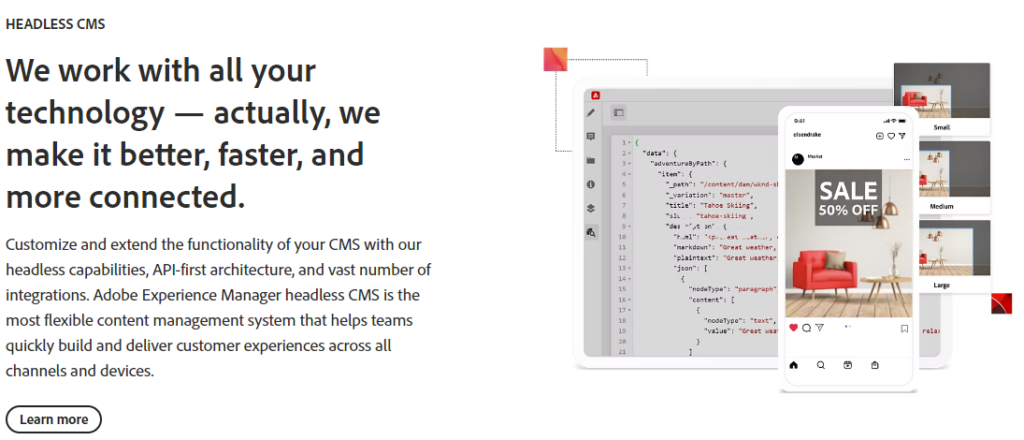
On the other hand, WooCommerce is built on top of WordPress, which is a highly optimized platform that can handle a lot of traffic. Additionally, WooCommerce offers many optimization plugins and tools that can help improve performance, even for smaller sites.
Check out our article about why website maintenance is important for performance.
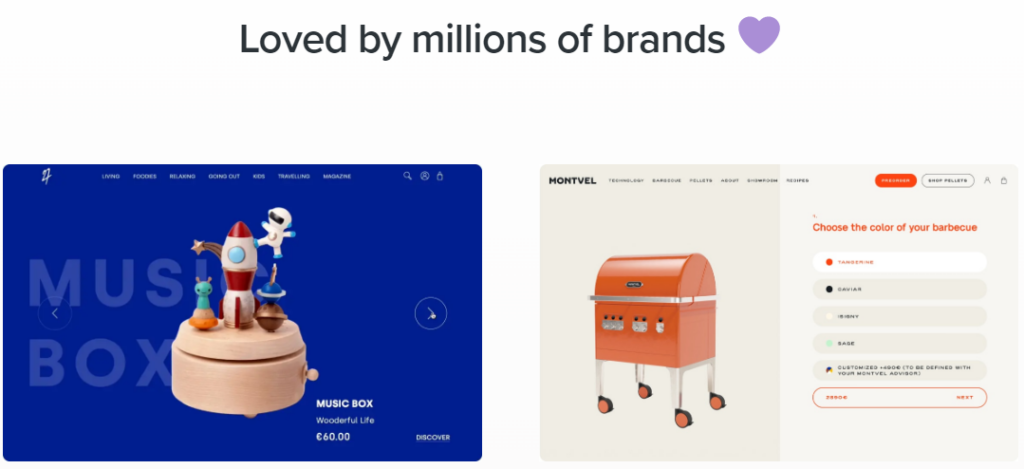
Security and reliability
Magento
It is known for its enterprise-level security features, such as two-factor authentication, advanced encryption, and regular security updates. It also has a dedicated team of security experts who monitor and address any vulnerabilities or threats.
Additionally, the community edition is open source, which means that developers can review and contribute to the code to help identify and fix any security issues. I would consider it to be a secure ecommerce platform.
WooCommerce
On the other hand, Woocommerce is built on top of WordPress, which is one of the most widely-used content management systems in the world. This makes it a target for hackers and security vulnerabilities.
However, WooCommerce has taken steps to address these concerns, including regular updates and security patches, as well as a range of plugins and extensions that can enhance its security. This fact can awaken doubts towards this ecommerce solution for you, and I absolutely understand that.
In terms of reliability, both platforms have a good reputation, but there have been some reported issues with scalability and performance on both platforms. Magento, in particular, requires a robust hosting environment to handle large volumes of traffic and data. WooCommerce can be more lightweight, but its reliance on WordPress means that it may not be as scalable as another ecommerce store.
Magento vs WooCommerce: product management
They both offer robust product management systems, allowing you to easily add, edit, and remove products from your online store.

WooCommerce is integrated seamlessly with WordPress, so managing products in your ecommerce store is similar to creating blog posts. You can add product descriptions, images, and categories, as well as set prices and shipping options. The platform also offers the ability to create product variations, such as different sizes or colors.

Magento commerce, on the other hand, has a more complex product management system that is better suited for larger online stores. You can create detailed product descriptions, images, and prices, as well as set up product attributes like size and color. Comparing Magento vs Woocommerce, the previous offers a more advanced system for managing product categories and subcategories.
Payment details of both ecommerce stores
Both of the most popular ecommerce platforms have several payment methods.
They support payment methods like cash on delivery, bank transfer, and check payments. These options can be helpful for businesses that want to offer more flexibility to their customers.
Payment gateways include popular options like PayPal, Stripe, Square, and Authorize.net. There are also many other payment gateway extensions available through the WooCommerce marketplace.
Depending on the payment gateway you choose, there may be processing fees associated with each transaction. These fees can vary based on the gateway and the volume of transactions you process.
WooCommerce takes payment security seriously and offers a range of tools and features to help protect your customers’ payment information. This includes support for SSL encryption, PCI compliance, and fraud prevention tools.
The time it takes for payments to process and be deposited into your account can vary based on the payment gateway you choose. Most payment gateways will deposit payments into your account within a few days of the transaction.
Search engine optimization and marketing of an online store
Search engine optimization (SEO) and marketing are crucial for the success of any e-commerce store, whether it’s powered by Magento vs WooCommerce.
While both Woocommerce SEO and Magento offers similar features, there are some differences when it comes to optimizing your online store for search engines and marketing your products effectively.
What is SEO?
It is the process of optimizing a website or web page to improve its visibility and ranking in the search engine results pages (SERPs) for specific keywords and phrases. SEO involves various techniques such as keyword research, on-page optimization, link building, and content creation to increase the quality and quantity of traffic to a website from search engines.
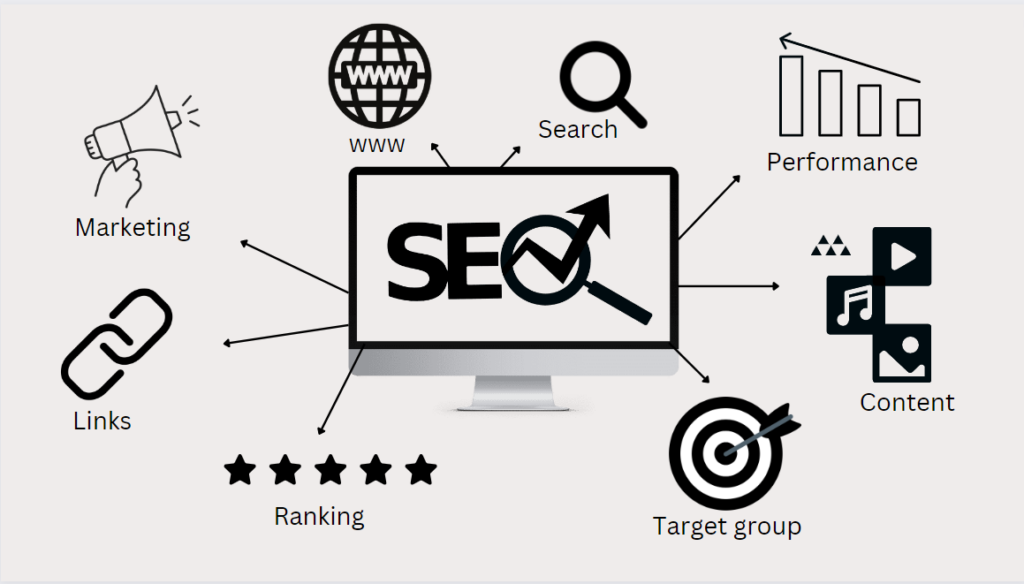
7 tips to optimize SEO and marketing
1.) Keyword research
Research keywords that your target audience is searching for. Use these keywords in your product titles, descriptions, and meta tags.
2.) On-page optimization
Optimize your product pages by adding high-quality images and videos, optimizing your product descriptions, and using internal linking to improve the user experience. Read our article about content optimization, if you’d like to know more.
3.) User experience
Make sure that your website provides an excellent user experience. This includes having a fast page load time, a mobile-friendly design, and a clear and easy-to-navigate site structure.
4.) Content marketing
Create high-quality and informative content, such as blog posts, how-to guides, and videos, that aligns with your target audience’s interests and needs.
5.) Social media marketing
Use social media platforms like Facebook, Instagram, and Twitter to promote your products, engage with your customers, and drive traffic to your website.
Check out our article to get an insight on the cost of social media marketing and see how social media has changed marketing here.
6.) Email marketing
Use email marketing campaigns to promote your products, offer discounts and coupons, and communicate with your customers.
7.) Pay-per-click (PPC) advertising
Use Google Ads or Bing Ads to drive traffic to your website and promote your products to a targeted audience.
Support for Magento vs Woocommerce
3 different levels of Magento store support:
1.) Magento Open Source
The free version of Magento offers community support. You can find support through the Magento community forums or by hiring a developer or agency that specializes in Magento.

2.) Magento Commerce
The paid version of Magento offers both community and professional support options. Community support is similar to the Magento Open Source version, while professional support is provided by Magento’s support team. This includes 24/7 technical support, dedicated account management, and access to Magento’s knowledge base and resources.
3.) Magento Enterprise
This is a more advanced version of Magento Commerce that is designed for larger businesses. It includes all the features of Magento Commerce, as well as additional enterprise-level features such as enhanced security, scalability, and performance. Support for Magento Enterprise is provided by a dedicated support team and includes priority response times and access to Magento’s advanced support resources.
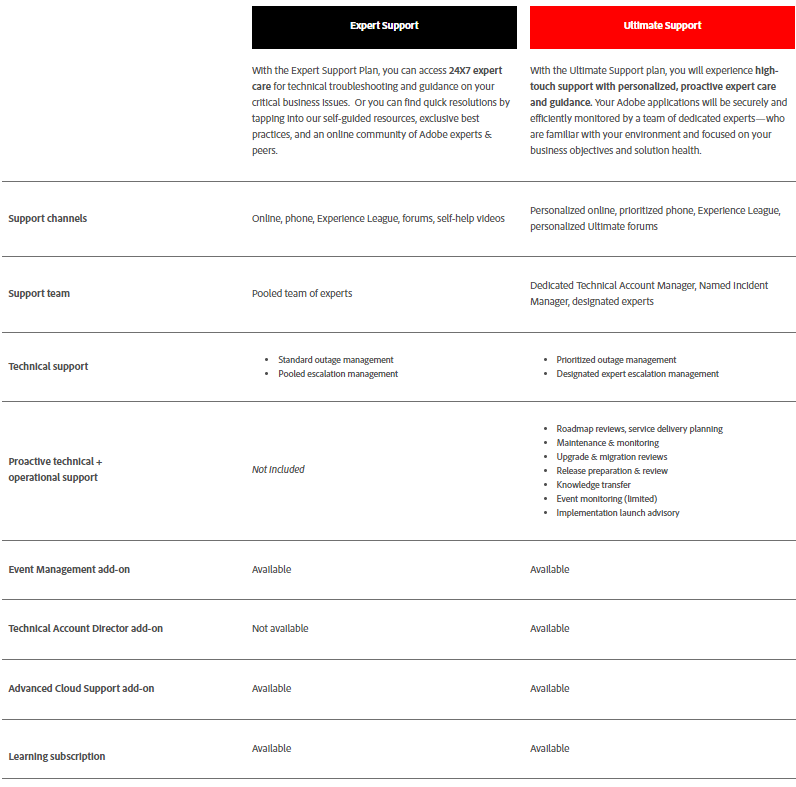
5 types of support for Woocommerce:
There is a variety of support options for Woocommerce store owners, depending on their needs and budget.
1.) Documentation
An extensive documentation for store owners is available at Woocommerce. It covers everything from getting started with the platform to advanced customization and troubleshooting.
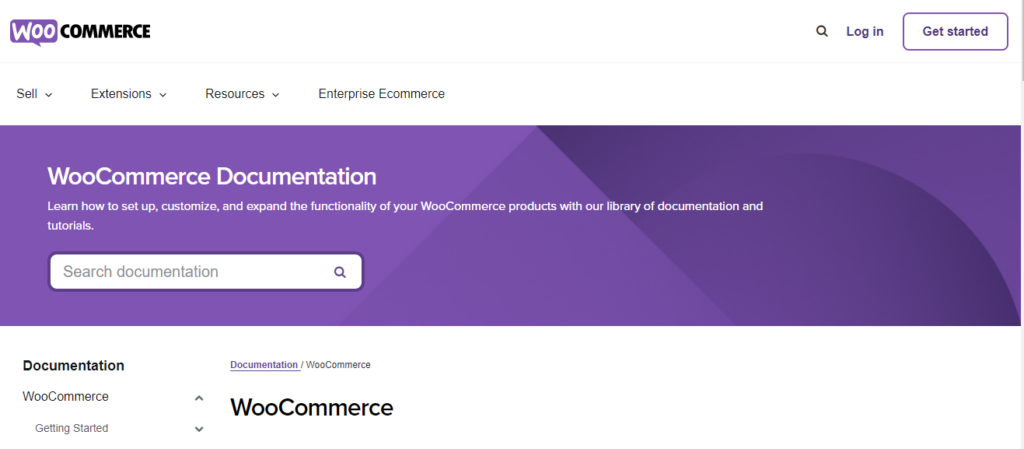
2.) Community forums
The active community of users and developers can provide support and advice through the WooCommerce community forums.

3.) Help desk support
WooCommerce offers a help desk support option that includes access to a team of experts who can help you with technical issues, bug fixes, and general questions. This is a paid support option that requires a subscription
4.) Priority support
If you require more personalized support, WooCommerce also offers priority support options that include one-on-one access to a support representative. This is also a paid support option that requires a subscription.
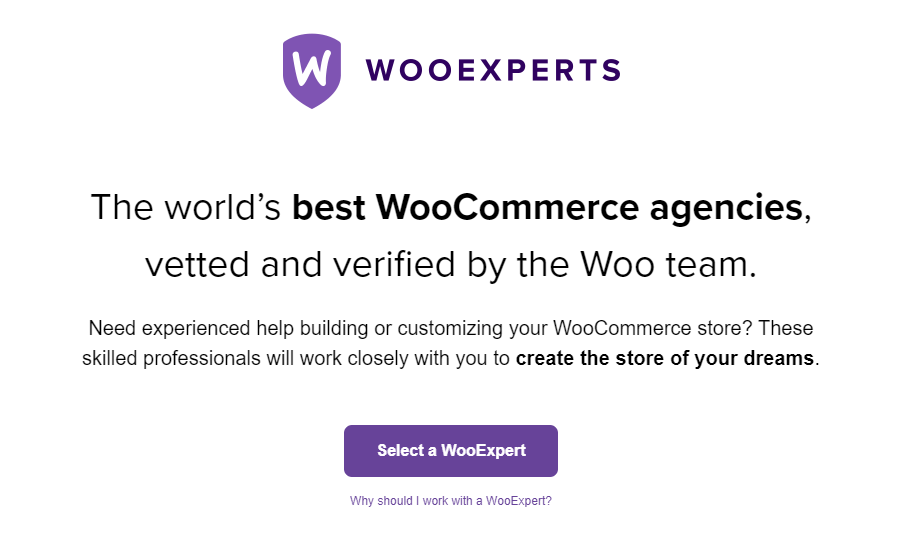
5.) Developers and agencies
If you need more advanced support for your ecommerce business, you can also hire a developer or agency that specializes in WooCommerce. This can be a good option if you need custom development work or ongoing maintenance and support.
Web hosting for ecommerce platforms
Web hosting for ecommerce platforms is similar to web hosting for any other website, but there are some specific considerations that store owners of ecommerce businesses need to take into account.
5 main features that your hosting provider should include for ecommerce hosting:
1.) SSL certificates
SSL (Secure Sockets Layer) certificates encrypt data transmitted between a customer’s browser and your website, ensuring that sensitive information like credit card numbers and passwords are protected. All ecommerce websites should have an SSL certificate, and many hosting providers offer free SSL certificates as part of their packages.
2.) Payment gateway integration
Ecommerce websites need to be able to process payments securely and efficiently. This requires integration with a payment gateway, such as PayPal, Stripe, or Authorize.net. Many hosting providers offer pre-built integrations with popular payment gateways, or allow you to install payment gateway plugins.
3.) Security features
Ecommerce websites are often targeted by hackers and cybercriminals, so it’s important to choose a hosting provider that offers robust security features like firewalls, malware scanning, and DDoS protection.
4.) Scalability
As your ecommerce business grows, you’ll need more server resources to handle increased traffic and sales. A good ecommerce hosting provider should offer flexible scalability options, such as the ability to easily upgrade your hosting plan or add additional server resources.
5.) Customer support
When you’re running an ecommerce business, any downtime or technical issues can have a significant impact on your bottom line. Choose a hosting provider that offers 24/7 customer support via multiple channels, such as phone, chat, and email.
5 success stories of businesses using Woocommerce and Magento
Woocommerce successes
1.) Death Wish Coffee
Death Wish Coffee is a small coffee company that sells the “world’s strongest coffee.” They started using WooCommerce in 2013, and within two years, they had grown their online sales from $1 million to $9 million.
2.) Saddleback Leather
Saddleback Leather is a high-end leather goods retailer that sells luxury bags, briefcases, and other leather goods. They switched to WooCommerce from Magento in 2016, and within a year, they increased their online sales by 60%.
3.) Blue Star Coffee Roasters
Blue Star Coffee Roasters is a small coffee roasting company based in Massachusetts. They switched to WooCommerce in 2014 and saw a 50% increase in their online sales within the first six months.
4.) Kuru Footwear
Kuru Footwear is a footwear brand that sells comfortable and supportive shoes for active lifestyles. They migrated from Magento to WooCommerce in 2017 and saw a 35% increase in their online sales within the first year.
5.) Spirithoods
SpiritHoods is a fashion brand that sells animal-themed clothing and accessories. They switched to WooCommerce in 2013 and saw a 37% increase in their online sales within the first year.
Magento successes
1.) Coca-Cola
The beverage giant uses Magento to power its e-commerce store, where customers can purchase branded merchandise and collectibles. The store features advanced personalization and customization options, allowing customers to create their own custom Coke bottles and other products.
2.) Ford
The automobile manufacturer uses Magento to power its online parts and accessories store, which offers a wide range of products for Ford vehicles. The store features a powerful search and navigation system, making it easy for customers to find the parts they need.
3.) Helly Hansen
The outdoor apparel brand uses Magento to power its global e-commerce store, which features a wide range of products for skiing, sailing, and other outdoor activities. The store features advanced personalization and customization options, allowing customers to tailor their purchases to their specific needs.
4.) Christian Louboutin
The luxury footwear brand uses Magento to power its e-commerce store, which features a wide range of high-end shoes and accessories. The store features advanced product filtering and search options, making it easy for customers to find the products they are looking for.
5.) Nestle Nespresso
The coffee brand uses Magento to power its global e-commerce store, which features a wide range of Nespresso machines and coffee capsules. The store features advanced personalization options, allowing customers to create their own custom coffee blends and purchase subscription services.
Decision: Is Magento or Woocommerce better?
In my honest opinion, choosing between the two platforms will cost you more time than actually setting up your ecommerce store.
That being said, both Woocommerce and Magento are great choices for setting up your own store.
If you’re running a small business, we recommend using WooCommerce. It’s perfect for beginners because it has a user-friendly interface and a page builder plugin, so you don’t need to be a coding expert to get started. Plus, there are plenty of free plugins available, making it a cost-effective choice.
On the other hand, if you’re a medium to large enterprise business, we suggest going with Magento. It’s a highly secure platform with advanced caching capabilities and many built-in features. You won’t need to rely on as many extensions as you would with WooCommerce, and there are still plenty of free extensions and themes available.
If you’re tech-savvy, you can even build your own Magento themes from scratch. Additionally, Magento has a strong framework for order management and offers numerous out-of-the-box features that aren’t available in WooCommerce.
Overall, whether Magento vs Woocommerce, it’s all up to you.
